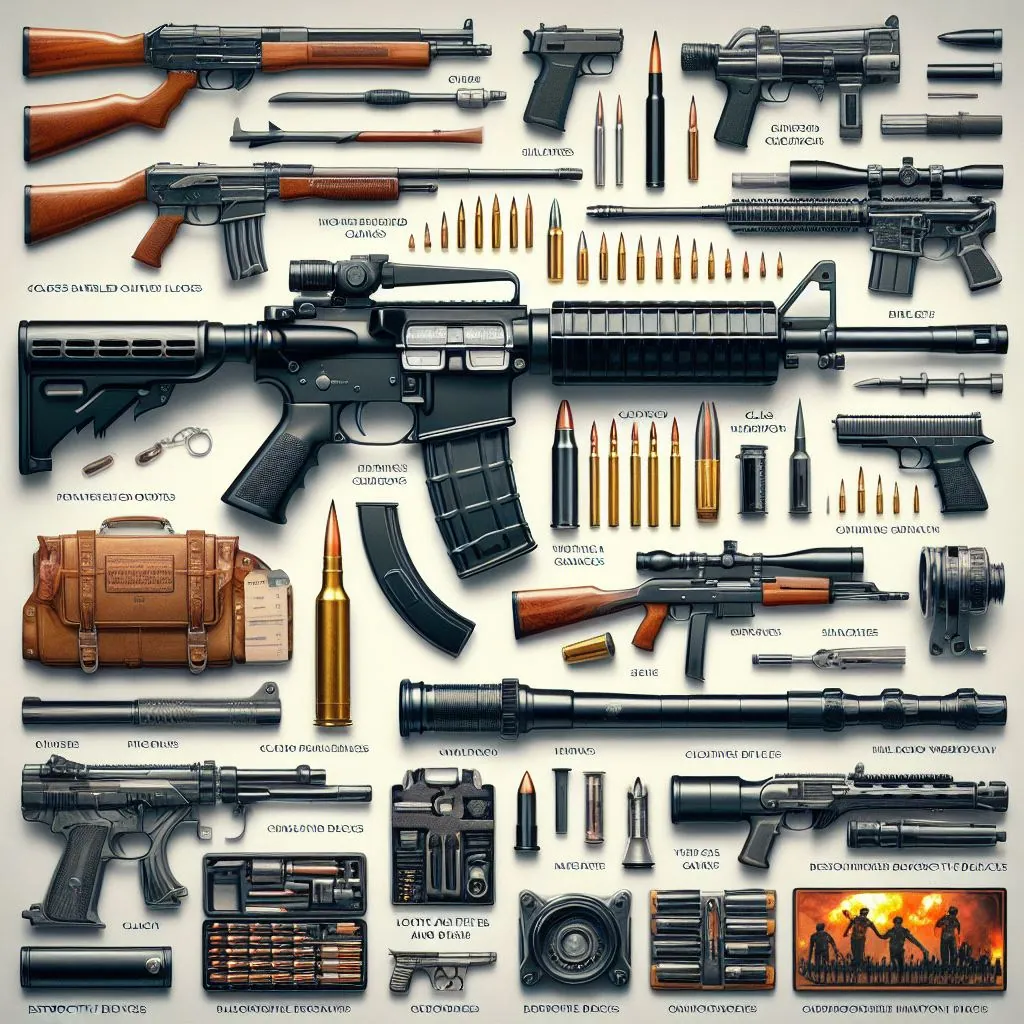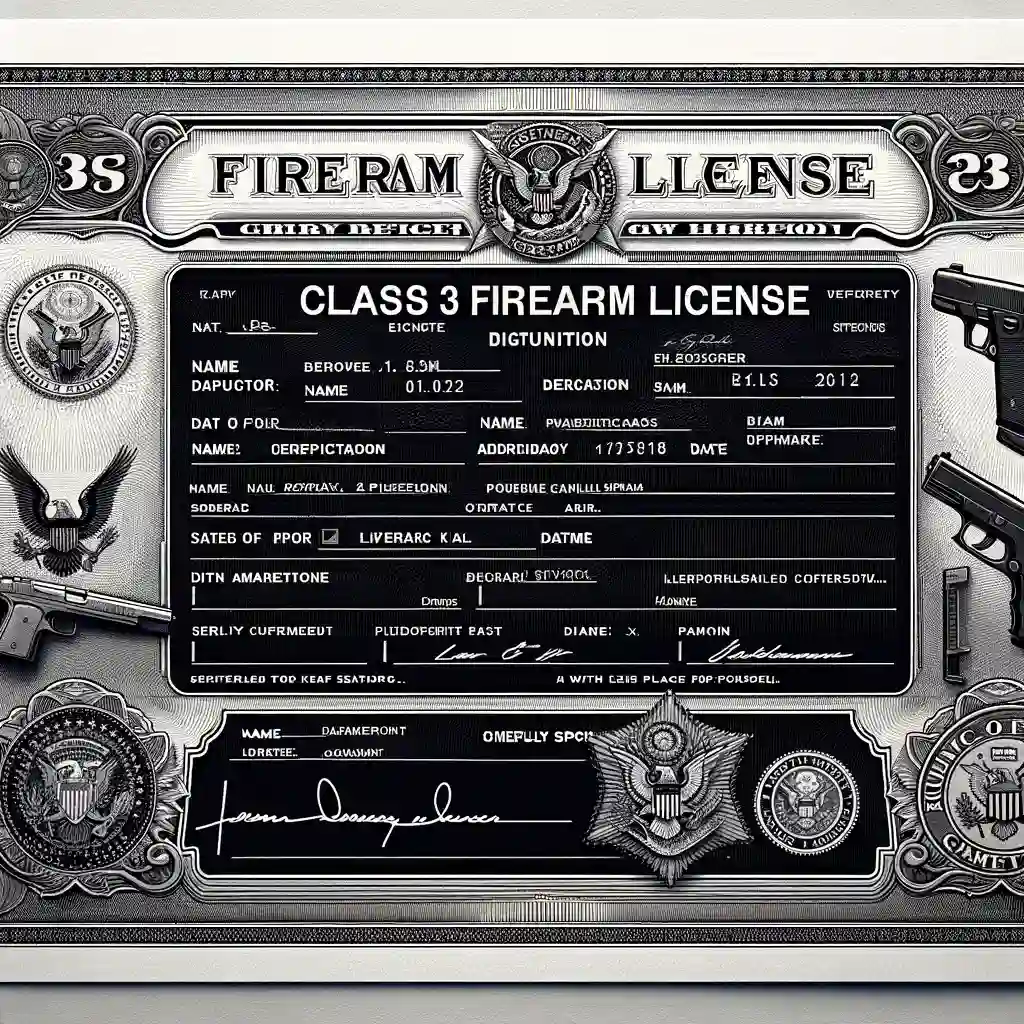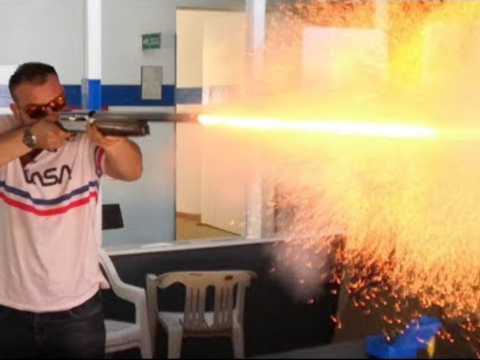Introduction to Class 3 Firearms

Class 3 firearms, which fall under the purview of the US Gun Control Act of 1968 encompass machine guns, short-barreled shotguns, and silencers. Special taxation and thorough background checks are required for their sale and possession. It is essential to understand their regulation because it carries safety implications.
The Impact of the National Firearms Act on Weapon Classification
The National Firearms Act (NFA) was put into place to control the possession of firearms that have a risk of being misused and posing a threat, to safety. Under the NFA firearms such as machine guns and shotguns with barrels and silencers. Known as Class 3 weapons. Are subject to regulations. These regulations include background checks, fingerprinting procedures, and approval from law enforcement agencies. The NFA aims to find a balance, between safeguarding the right to bear arms and ensuring safety.
History and Purpose of the NFA
The NFA, also known as the National Firearms Act was created in 1934 to be the law that addressed firearm sales and ownership, in the United States. It was put into place as a response to the rise in crime rates during Prohibition when criminals were increasingly using types of firearms.
The main goal of the NFA was to limit and closely monitor the availability of guns for the sake of safety. This legislation set a precedent, for gun control laws showcasing the government’s dedication to reducing instances of violence related to firearms.
what exactly qualifies as a Class 3 weapon?
Criteria for a Class 3 Weapon
To meet the criteria of being classified as a Class 3 weapon it must fall into categories outlined in the National Firearms Act. These categories mainly focus on the design and functionality of the weapon.
The categories include, but Are not limited to fully automatic firearms (meaning they continuously fire bullets as long as the trigger is held) rifles or shotguns with barrels shorter, than 16 inches or 18 inches respectively, and devices like firearm mufflers or silencers.
Types of Class 3 Weapons

Class 3 weapons are commonly associated with automatic machine guns that can fire continuously with a single trigger pull. Barreled shotguns and rifles also fall under this category because their shorter barrels make them easier to conceal and therefore subject to regulation. Silencers, which are used to reduce firearm noise are also included in this classification.
Some items may not be as well known but still fall under Class 3. These include devices like grenades or other explosives well as “Any Other Weapons” (AOWs) which encompass disguised guns and other unique or miscellaneous firearms.
All these weapons have regulations imposed by the NFA due to their increased potential, for misuse.
Classification Criteria for Firearms
Factors and Characteristics, in Determining the Classification of Firearms
When it comes to categorizing firearms various factors come into play such as the gun design features and how it functions. Important aspects to consider include whether the firearm operates in a semi-automatic mode the length of its barrel its overall size and any accessories that may be attached to it.
Additionally the intended purpose of the firearm—whether it’s meant for hunting, self-defense, or military applications—also impacts its classification.
Influence of Features on Classification
Features like barrel length and overall length have an impact on how firearms are classified. For example, a firearm with a barrel is more compact and easier to conceal which raises concerns about misuse and leads to stricter classification. Similarly shorter overall lengths often result in regulations. Additionally, accessories like silencers and grenade launchers can also affect a firearm classification due, to their potential to increase its lethality.
Specific Features Classifying a Firearm as Class 3
Class 3 firearms, as defined by the National Firearms Act have some characteristics. For instance, automatic firearms that can fire rounds, with a single trigger pull fall under Class 3. Additionally, firearms with barrels than 16 inches (for rifles) or 18 inches (for shotguns) are also classified as Class 3 because they can be easily concealed.
Moreover, firearms equipped with silencers to reduce the noise produced when firing are categorized as Class 3 due to their misuse, in criminal activities. Understanding these features helps individuals navigate the classification and regulations surrounding Class 3 firearms effectively.
Bureau of Alcohol, Tobacco, Firearms and Explosives (ATF)

The Bureau of Alcohol, Tobacco, Firearms and Explosives (ATF) is a law enforcement agency that operates under the United States Department of Justice. One of the responsibilities entrusted to the ATF is to enforce the regulations laid out in the National Firearms Act and other federal laws about firearms.
The ATF plays a role, in determining the categorization of weapons including Class 3 firearms. They conduct assessments taking into account factors such, as design, features, and intended usage to accurately classify each weapon according to the specifications outlined by the NFA.
Process and Requirements for Obtaining Class 3 Status
To obtain a Class 3 status, for a firearm a dealer needs to possess a Federal Firearms License of Type 1 2 7 8 9 10 or 11 and fulfill the payment of a Special Occupational Tax (SOT). The ATF oversees this process. If an individual wishes to purchase a Class 3 weapon they are required to submit an application containing information along with passport photos and fingerprints, to the ATF.
After submission, the application undergoes a background check that may take months. If the application is approved the individual must pay a one-time transfer tax. However, it’s important to note that local and state laws may impose requirements or even prohibit the possession of Class 3 weapons
Class 3 Firearm License

Obtaining a Class 3 License
To obtain a Class 3 license there are steps overseen by the Bureau of Alcohol, Tobacco, Firearms and Explosives (ATF). These steps include;
1. Holding a type of Federal Firearms License (FFL) such, as types 1 2 7 8 9, 10, or 11.
2. Paying a Special Occupational Tax (SOT).
3. Completing an ATF Form 4 with all the information. Providing fingerprint cards along, with passport-sized photographs.
4. Undergoing a background check conducted by the ATF.
5. Waiting for the application to be approved which can take months.
6. Paying a one-time transfer tax.
7. Taking into consideration any requirements or limitations imposed by state laws.
Responsibilities and Restrictions of a Class 3 License Holder
Having a Class 3 license brings about obligations and limitations. Individuals holding this license must strictly follow firearm laws at the state and local levels. This involves maintaining records of all firearm transactions securely storing weapons and promptly reporting any stolen firearms to the ATF.
Additionally, Class 3 weapons need to be registered with the National Firearms Registration and Transfer Record (NFRTR). License holders may undergo surprise inspections, by the ATF to ensure compliance with all regulations.
Failure to adhere to these rules can lead to consequences, including license revocation and potential criminal charges. Furthermore, certain states may impose laws that restrict or prohibit the possession of Class 3 weapons; thus license holders must be knowledgeable, about and comply with all legislation.
Current Trends and Changes
Recent changes
In times there has been a trend, towards imposing stricter regulations on Class 3 weapons. Both federal and state governments are continuous. Refining laws to prioritize safety at the highest level.
For instance, the ATF has recently made amendments to its rules by including trusts and corporations in the background check procedures. This change effectively closed a loophole that allowed access to Class 3 weapons through these entities.
Moreover, several legislative proposals have emerged to strengthen background checks and increase the transfer tax on Class 3 weapons. Although these proposals have not yet become law they hold potential for bringing about changes, in the existing regulatory framework.
Ongoing Discussions and Disputes
The topic of regulating Class 3 weapons continues to generate discussions. Those, in favor of gun control argue that these weapons pose a threat to public safety and should be heavily regulated or even banned entirely. They point to instances where these weapons have been misused and argue that their availability contributes to a culture of violence.
On the other hand, supporters of gun rights advocate for a lenient approach asserting that Class 3 weapons are protected under the Second Amendment right to bear arms. They argue that law-abiding citizens should not be punished for the actions of individuals who misuse these weapons.
The debate is further complicated by varying state laws regarding Class 3 weapons resulting in an array of regulations that can be challenging for both legislators and firearm owners to navigate. These ongoing discussions underscore the sometimes contentious nature surrounding regulations, on Class 3 weapons.
Conclusion
Understanding the laws surrounding Class 3 weapons is essential, for navigating through their world. Federal, state, and local regulations are in place to prioritize safety and prevent these weapons from getting into the wrong hands.
While organizations like the ATF play a role in enforcing these regulations it is equally important for current owners to educate themselves and strictly abide by these laws.
The ongoing conversation about regulating Class 3 weapons highlights the balance, between safeguarding safety and respecting individual rights. As citizens, we must actively participate in this discussion and strive towards responsible firearm ownership within the bounds of the law.






